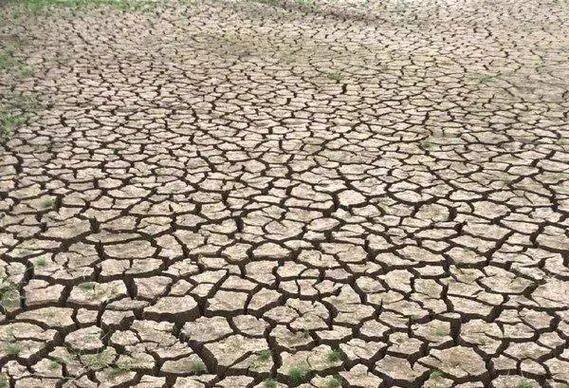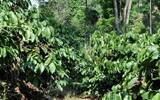ICO August coffee report: Robusta prices rise to record high
Recently, the International Coffee Organization (ICO) released a report on the coffee industry in August, according to the report, the monthly average price index of coffee was 238.92 cents / pound, up 1% from July, but up 54.6% from the same period last year, with prices fluctuating between 222.58 cents and 254.12 cents in August.
Spot prices of all types of coffee rose to varying degrees in August, with Robusta coffee prices at the highest level in nearly 47 years for two months. In addition, in terms of coffee futures, Robusta also broke the record, reaching 5285 US dollars per ton.
The crazy price rise is due to the tight supply caused by the global climate deterioration, the increase in the cost of capital caused by the rise in interest rates, and the logistics problems caused by geopolitics in the Middle East. According to the export situation of various regions, exports in the Asia-Pacific region and Central America have decreased, of which the Asia-Pacific region has decreased by 8.1% and the Central American region by 7.1%.
In the Asia-Pacific region, at the beginning of this year, Vietnam reported severe dry weather, resulting in severe production cuts and a decline in exports. According to a report by Vietnam's General Administration of Customs, Vietnam exported 1.216 million bags (60 kg / bag) in August, which was higher than the previous estimate of 1.16 million bags, but decreased by 14.1% compared with the same period last year. And since 2023, Vietnam has exported a total of 23441199 bags of coffee, a decrease of 12.71% compared with the same period last year.
Although South America performed well in coffee exports in August, severe fires were reported in several countries in South America in September, including Colombia, Peru, Brazil and Bolivia. And most of the fires occurred in coffee-growing areas in these countries, coupled with the hot and dry weather in South America in recent days, aggravating the fire situation and having a serious impact.
In Brazil, the coffee harvest in the new season was completed at the end of August, but during the new season, drought and lack of rain have been reported in Brazil, resulting in the problem of small coffee beans, affecting the final coffee production. Moreover, recently, many parts of Brazil are still suffering from severe drought, resulting in water shortages, serious fires, burning of farmland in some areas, and serious air pollution. This will have an impact on the current coffee growth and flowering period, and will affect coffee production in the new season next year.
In addition, the current price frenzy is also related to the European Union, which last year issued the No deforestation Act (EUDR), which will restrict deforestation related to many agricultural products imported by the EU, including coffee, and will be formally implemented on December 31, 2024. Therefore, at present, a number of coffee traders in the European Union have recently increased their purchases and do not hesitate to increase their prices, in order to ensure sufficient inventory before the implementation of the EUDR Act, as these purchases have greatly pushed up market prices.
However, the International Coffee Organization predicts that global coffee production in 2023 will increase 5.8% year on year to 178 million bags, of which Arabica coffee production is expected to be 102.2 million bags, Robusta coffee production is expected to be 75.8 million bags, and global coffee consumption demand is expected to increase 2.2% to 177 million bags in 2023 Coffee 24.
However, many people in the industry are not optimistic about this data because they will face La Nina weather at the end of the year. According to the latest report of the World Meteorological Organization, the probability of La Nina phenomenon from September to November this year is 55%. The probability of La Nina phenomenon from October to February next year will increase to 60%. Once the La Nina phenomenon appears, it will have a negative climate impact on many countries, resulting in the possibility of production reduction.

For more information about coffee producing areas, please scan the code directly and follow: coffee comments.
Long press the QR code to follow:
TRANSLATE with
XEnglishArabicHebrewPolishBulgarianHindiPortugueseCatalanHmong DawRomanianChinese SimplifiedHungarianRussianChinese TraditionalIndonesianSlovakCzechItalianSlovenianDanishJapaneseSpanishDutchKlingonSwedishEnglishKoreanThaiEstonianLatvianTurkishFinnishLithuanianUkrainianFrenchMalayUrduGermanMalteseVietnameseGreekNorwegianWelshHaitian CreolePersian
TRANSLATE with
COPY THE URL BELOW
BackEMBED THE SNIPPET BELOW IN YOUR SITE Bing Webmaster PortalBack
Important Notice :
前街咖啡 FrontStreet Coffee has moved to new addredd:
FrontStreet Coffee Address: 315,Donghua East Road,GuangZhou
Tel:020 38364473
- Prev

Encountered the strongest typhoon in 1975! No one can stop Shanghainese from drinking coffee!
▲ Click to pay attention| Daily Boutique Coffee Culture Magazine Coffee Factory Sure enough, typhoons always prefer weekends and holidays, and this Mid-Autumn Festival is no exception. In the past two days, Typhoon "Beibijia" has landed on the coast of Lingang New City, Pudong, Shanghai at a strong typhoon level, becoming the strongest typhoon to land in Shanghai since 1949. September 15
- Next

Where is Robsta's hometown? Which countries are Robusta mainly produced in?
In the global coffee market, coffee is mainly divided into three major varieties: Arabica, Robusta and Liberica. There are countless small varieties under the subdivision of large varieties. Currently, the most famous commercially planted tree variety is Arabi
Related
- Why can American refills for free? The difference between Americano and American drip pot coffee
- Being chased out of the rain in front of Starbucks?! Store: Sheltering from rain under umbrellas poses a safety hazard
- The white moonlight has changed?! Lucky launches "Big Winter Pear American"
- Hand-brewed coffee three-stage method, high-sweet and universal brewing method to share! What does the high sweet water level of hand-brewed coffee mean?
- What is the difference between raw, refined and full espresso coffee? How to extract espresso and taste good?
- A complete list of coffee bean names and their meanings! What is Yejia Shefi coffee? Where is Mantelin coffee?
- What grade does Arida Manor Kaduai coffee beans belong to? What treatment is Arida ASD slow anaerobic sun exposure?
- The milk tea cup becomes smaller?! Overlord Tea Girl launches a new "Return to Yunnan" series
- Accused of selling counterfeit and high-priced coffee beans! Well-known boutique coffee brand "Oukelao" bowed and apologized!
- How to make espresso dumplings? Can I eat coffee and glutinous rice balls together?

